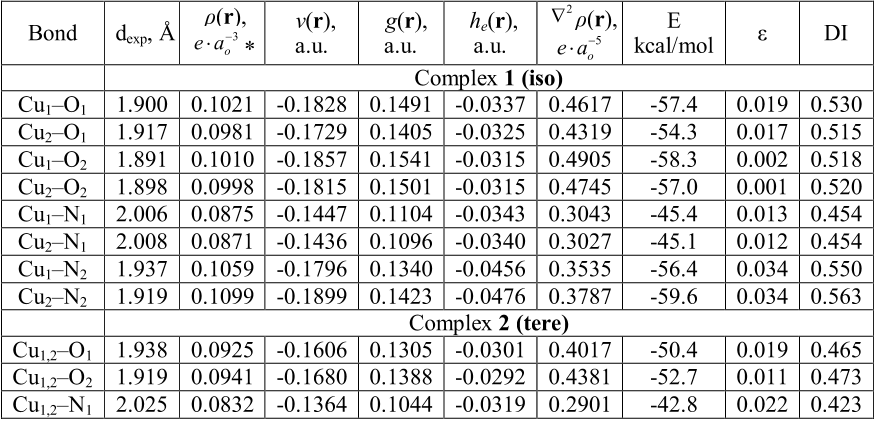Q1. What are the contributions mentioned in the paper "A computational study of structural and magnetic properties of bi- and trinuclear cu(ii) complexes with extremely long cu---cu distances" ?
The calculated values of spinspin exchange for the studied dinuclear complexes indicate a very weak ferromagnetic coupling of the unpaired electrons in good agreement with experimental data. At the same time, the trinuclear copper ( II ) complex possesses a low-spin doublet ground state with one ferromagnetic and two antiferromagnetic spin projections between the triangular-positioned Cu ions.



![Figure 3. Structure of the complexes 1–3 in accordance with X-ray data and QTAIM analysis. In terms of the QTAIM formalism [46], all the coordination Cu–N and Cu–O bonds should be assigned to the intermediate type interactions that are characterized by positive values of the electron density Laplacian r2 and the negative electron energy density he(r) values. From one aspect, the positive r2 values indicate outflow of electron density from interatomic space into the](/figures/figure-3-structure-of-the-complexes-1-3-in-accordance-with-x-3qrjud7v.png)

